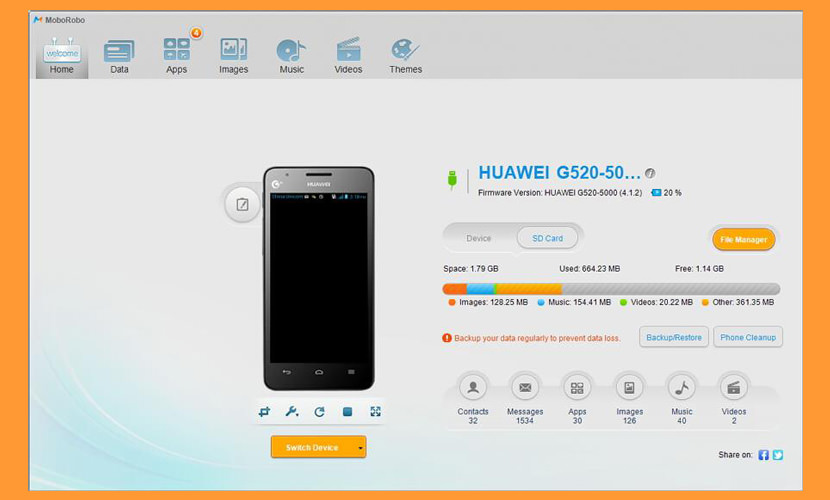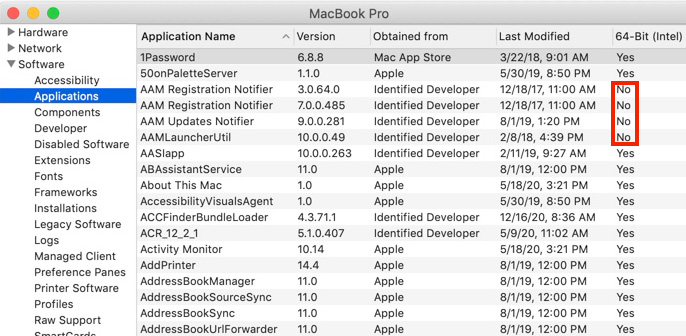- Can We Convert 32 Bit Software To 64 Bit
- Convert 32 Bit App To 64 Bit Mac
- Convert 32-bit App To 64-bit Mac Download
- Convert 32-bit App To 64-bit Mac Os
- How To Convert 32 Bit To 64 Bit Mac
- Yes, the Steam client itself is 64-bits, and most of your games probably are too, but if you've had an install for a while, your client is probably only 32-bit. Here's how to make sure you've got.
- Free download 32 bit to 64 bit converter Files at Software Informer. Determine if OCX, DLL, CPL, EXE, SYS, SCR or DRV files are 32-bit or 64-bit. This software will also tell you if your.
- Any app that's built with Apple's 32-bit software libraries will need to be updated so it will run in 64-bit mode. These are primarily older applications, but some newer specialty apps are also still 32-bit. As Apple says, 'The technologies that define today's Mac experience—such as Metal graphics acceleration—work only with 64-bit apps.
While iOS and macOS have historically supported both 32 and 64-bit apps,Apple has gradually deprecated 32-bit support.
During Apple's transition from 32-bit to 64-bit, iOS apps will need to run on both 32-bit and 64-bit hardware. Because of this, Xamarin's Unified API allows developers to target both. Targeting both 32-bit and 64-bit architectures will significantly increase the size of an application.
As of iOS 11, 32-bit apps will no longer launch, andall submissions to the App Store must support 64-bit.
Starting in January 2018, new apps submitted to the Mac App Storemust support 64-bit, andexisting apps must be updated by June 2018.
Xamarin's Classic API (XamMac.dll and monotouch.dll) supported only32-bit applications. However, new Xamarin.iOS and Xamarin.Mac applicationsuse the Unified API(Xamarin.iOS and Xamarin.Mac) by default, and can therefore target both32 and 64-bit, as necessary.
iOS
Enabling 64-bit builds of Xamarin.iOS apps
Warning
This section is included for historic reasons, and to help move older Xamarin.iOS projects to the Unified API and support 64-bit. All new Xamarin.iOS projects will use the Unified API and target 64-bit by default.
For Xamarin.iOS mobile applications that have been converted to the Unified API, developers must manually update the build settings to target 64-bit:
In the Solution Pad, double-click the app's project to open the Project Options window.
Select iOS Build.
For the iPhone Simulator, in the Supported architectures dropdown, select either x86_64 or i386 + x86_64:
For physical devices, select one of the available ARM64 combinations:
Click OK.
Perform a clean build.
In the Solution Explorer, right-click the app's project and select Properties.
Select iOS Build.
For the iPhone Simulator, set Supported architectures to either x86_64 or i386 + x86_64:
For physical devices, select one of the available ARM64 combinations:
Save your changes.
Perform a clean build.
ARMv7s is supported only by the A6 processor included in the iPhone 5 (or greater). ARMv7 code is faster and smaller than the ARMv6, only works with the iPhone 3GS and later, and is required by Apple when targeting the iPad or a minimum iOS version of 5.0. ARMv6 works on all devices but is no longer supported by the compiler shipped with Xcode 4.5 and later.
ARM64 is required to support iOS 8 on iPhone 6 or other 64-bit devices and will be required by Apple when submitting new or updating exiting applications in the iTunes App Store.
For a comprehensive look at the capabilities of various iOS devices, check out Apple'sDevice Compatibility document.
64-bit and binary size increases
During Apple's transition from 32-bit to 64-bit, iOS apps will need to run on both 32-bit and 64-bit hardware. Because of this, Xamarin's Unified API allows developers to target both.
Targeting both 32-bit and 64-bit architectures will significantly increase the size of an application. However, doing so will allow newer devices to run optimized code while still supporting older devices.
Important
If you receive the following message when submitting an iOS application to the iTunes App Store, 'WARNING ITMS-9000: Missing 64-bit support. Starting February 1, 2015, new iOS apps uploaded to the App Store must include 64-bit support and be built with the iOS 8 SDK, included in Xcode 6 or later. To enable 64-bit in your project, we recommend using the default Xcode build setting of “Standard architectures” to build a single binary with both 32-bit and 64-bit code.' You need to switch the supported architectures to one of the available ARM64 combination (as shown above), recompile and resubmit.


Mac
Important
Starting in January 2018, all new Mac apps submitted to theMac App Store must support 64-bit. Existing Mac App Store apps and theirupdates must support 64-bit starting in June 2018. SeeApple's announcmentand a guide that describes how to update your Xamarin.Mac apps to 64-bit.
Can We Convert 32 Bit Software To 64 Bit
Most modern Mac computers support both 32-bit and 64-bitapplications. MacOS 10.6 (Snow Leopard) was the lastoperating system to run on 32-bit systems. Most Macsreleased since 2010 support both systems.
Unlike iOS, many of the new frameworks introduced in recentversions of macOS are only supported in 64-bit mode (CloudKit,EventKit, GameController, LocalAuthentication, MediaLibrary,MultipeerConnectivity, NotificationCenter, GLKit, SpriteKit,Social, and MapKit, among others).
The Unified API allow developers to choose what kind ofapplications they want to produce: 32-bit or 64-bit.
32-bit applications will run on both 32-bit and64-bit Mac computers, have an address space limited to 32bits, and require that all libraries are 32 bits.
Convert 32 Bit App To 64 Bit Mac
You will typically use this mode if you have 32-bitdependencies that do not run in 64-bit mode, if you want tohave a smaller download, or if there are no performancebenefits in moving to 64-bit.
This mode is limiting as you wont be able to use manyframeworks available in macOS Mavericks and macOS Yosemite.
64-bit applications will only run on 64-bit Macdevices.
For Mac, this is the preferred mode of operation as mostMacs in use today support 64-bit mode, and you have access tothe complete set of frameworks provided by Apple.
Enabling 64-bit builds of Xamarin.Mac apps
For information about building a 64-bit app using Xamarin.Mac,please see the Updating Xamarin.Mac Unified applications to 64-bitguide.
Related links
Apple began transitioning to 64-bit hardware and software technology for Mac over a decade ago, and all modern Macs now include powerful 64-bit processors that can run advanced 64-bit apps. These apps can access dramatically more memory, enable faster system performance, and take advantage of technologies that define today's Mac experience.
Apple has been working with developers to transition their apps, and in 2018 Apple informed them that macOS Mojave would be the last version of macOS to run 32-bit apps. Starting with macOS Catalina, 32-bit apps are no longer compatible with macOS.
If you get an alert about a 32-bit app
You will see one of these alerts when attempting to open a 32-bit app:
[app name] needs to be updated.
The developer of this app needs to update it to work with this version of macOS. Contact the developer for more information.
Convert 32-bit App To 64-bit Mac Download
[app name] is not optimized for your Mac and needs to be updated.
This app will not work with future versions of macOS and needs to be updated to improve compatibility. Contact the developer for more information.
Convert 32-bit App To 64-bit Mac Os
When installing macOS, you may see a list of recently used apps that are 32-bit. You can review this list before deciding to continue installation. You may also see a prohibitory symbol over the icon of each 32-bit app in the Finder, letting you know that the app will not open.
How To Convert 32 Bit To 64 Bit Mac
For all 32-bit apps, please contact the developer of the app to learn whether an updated version of their software is available or planned.